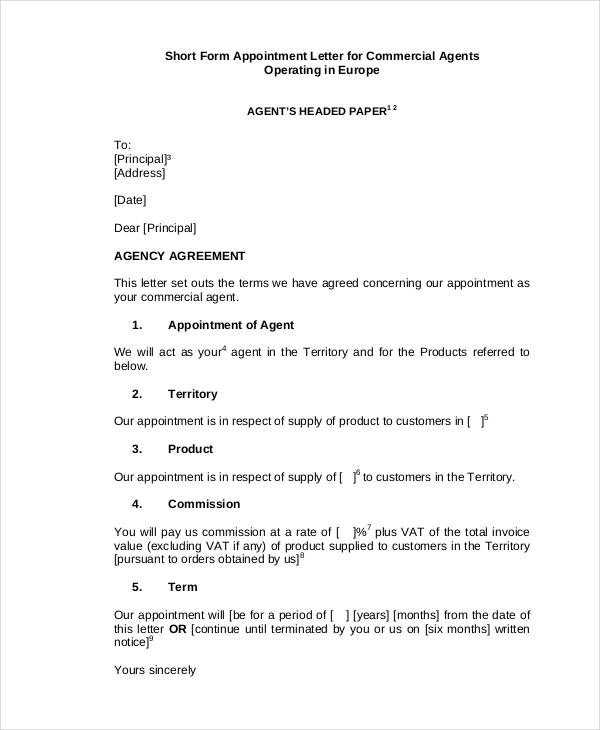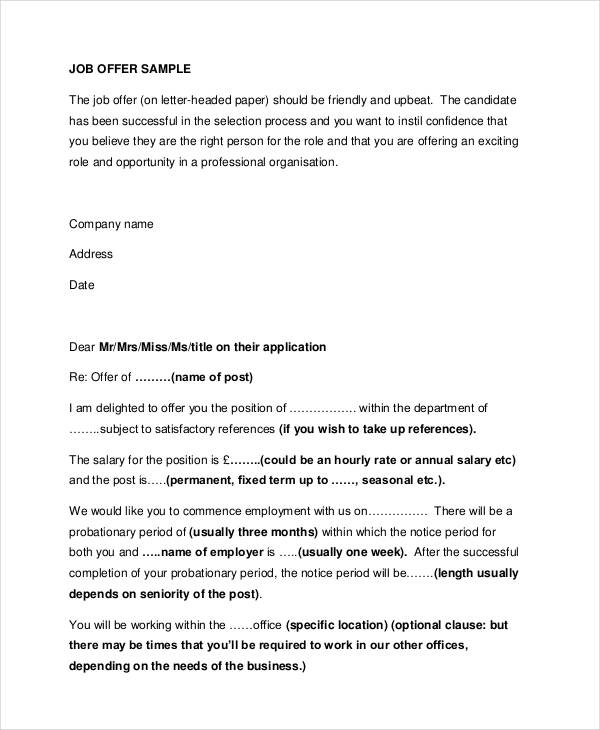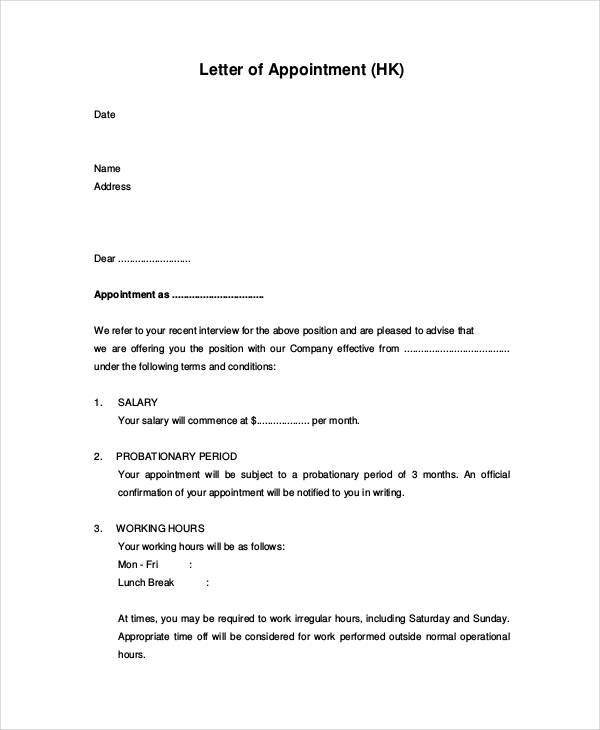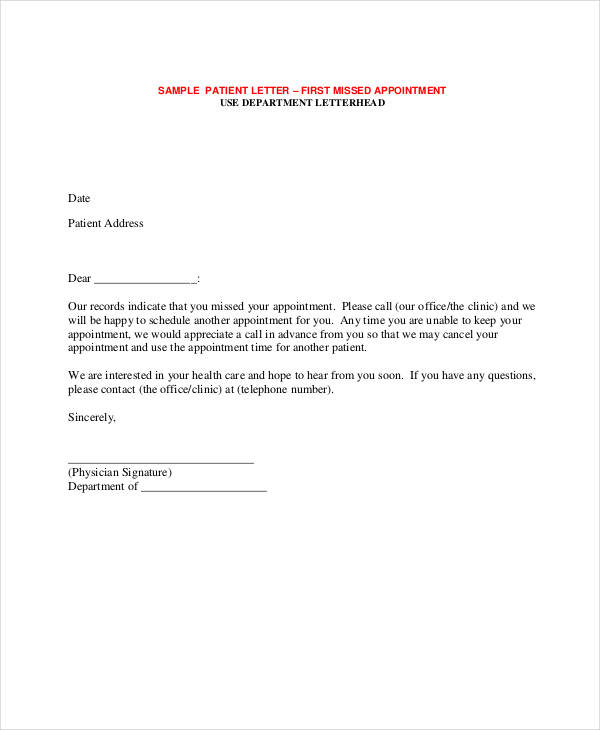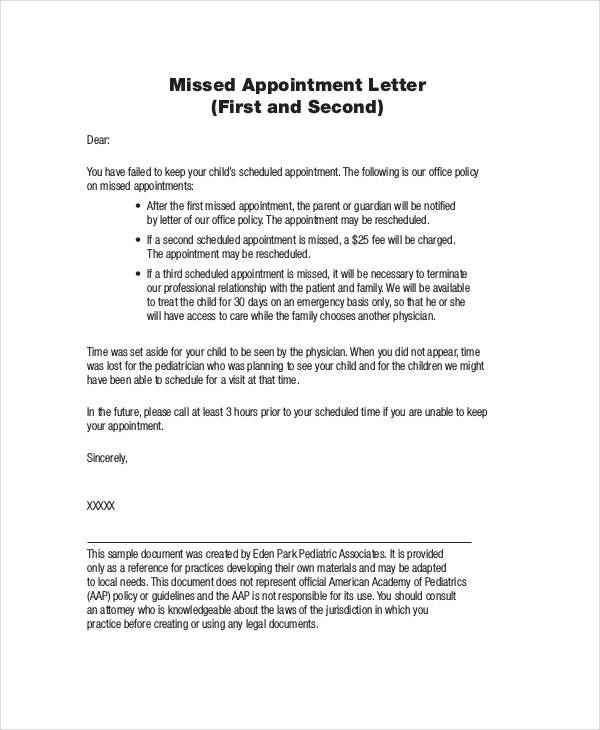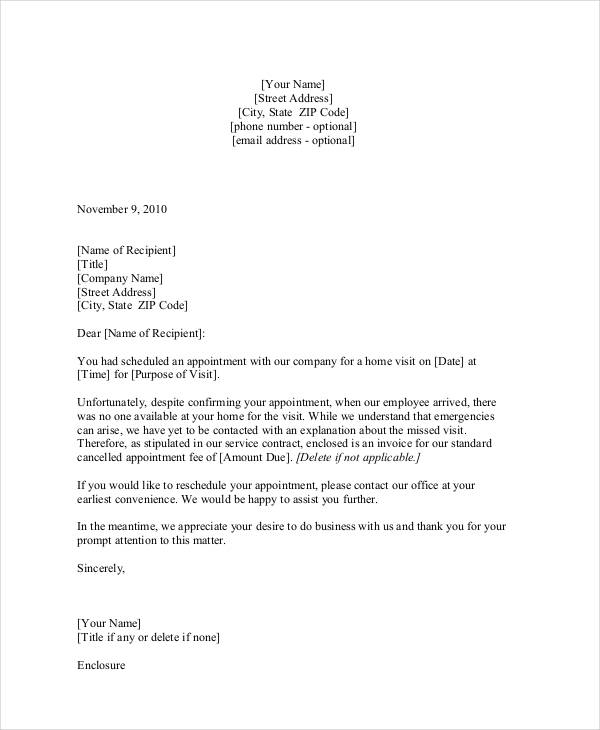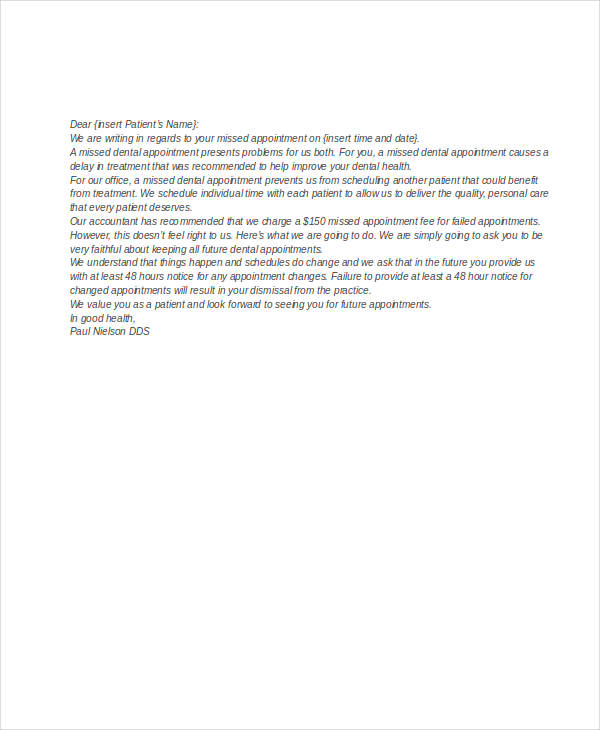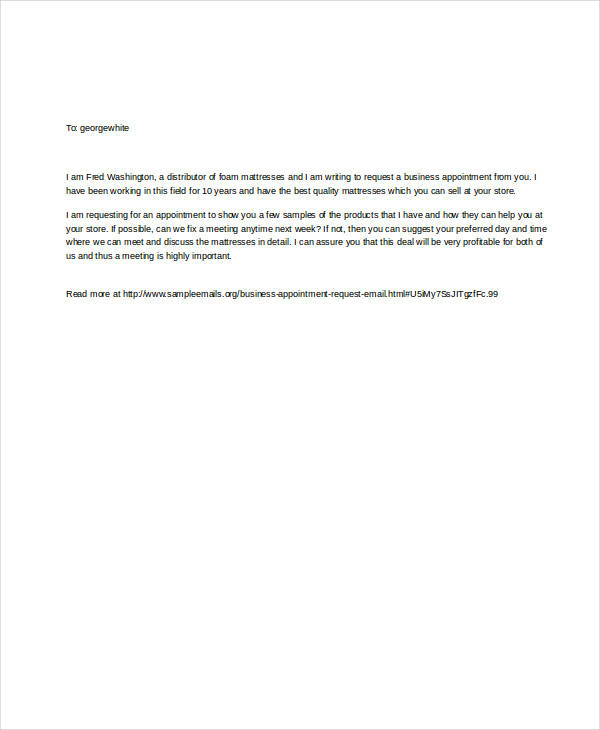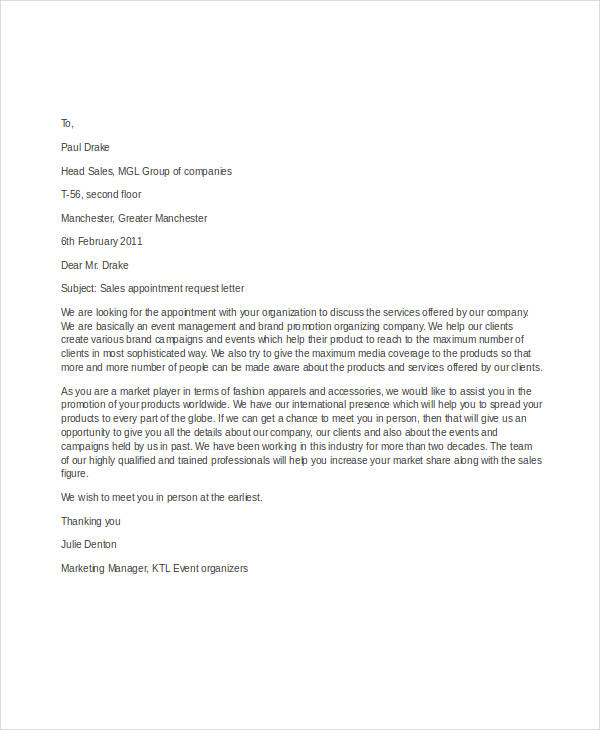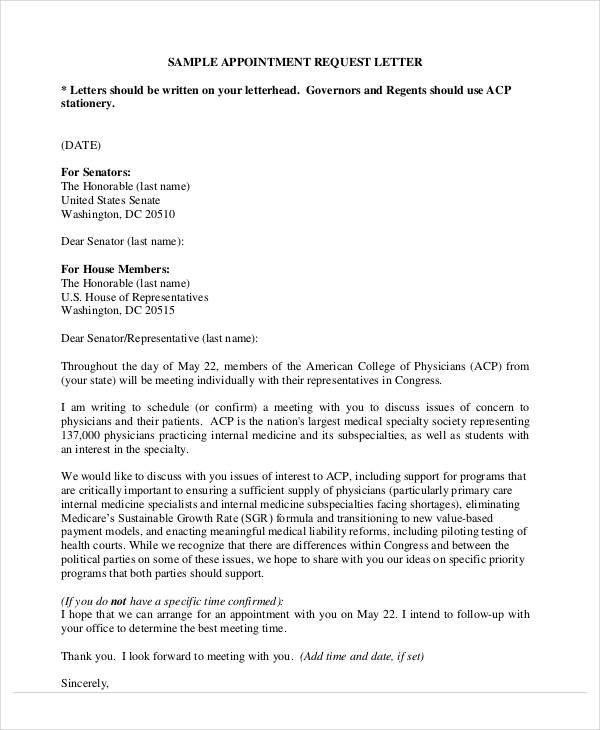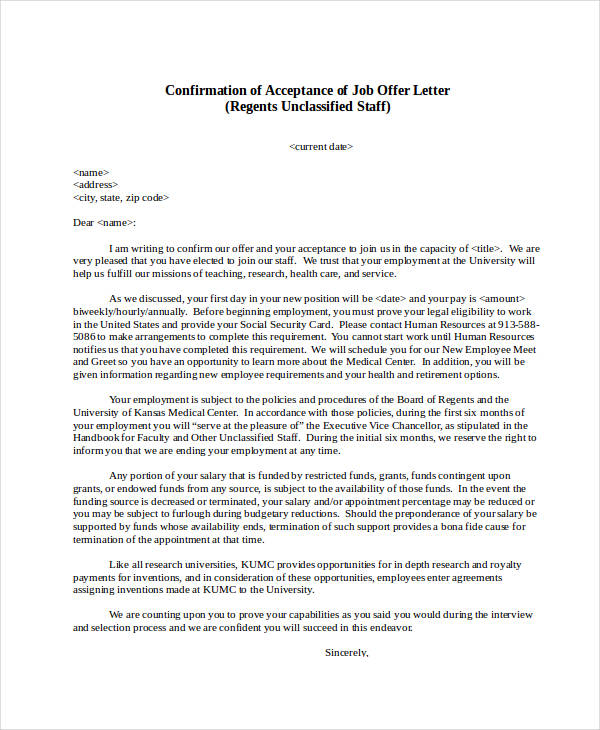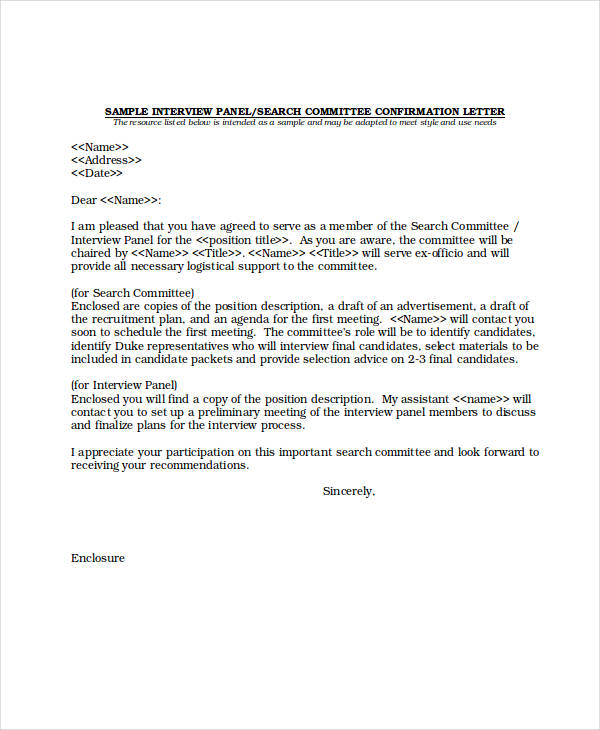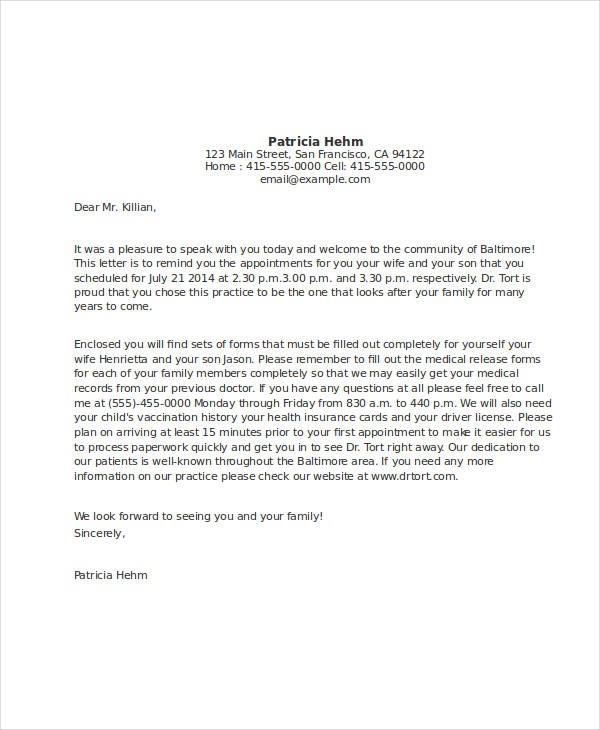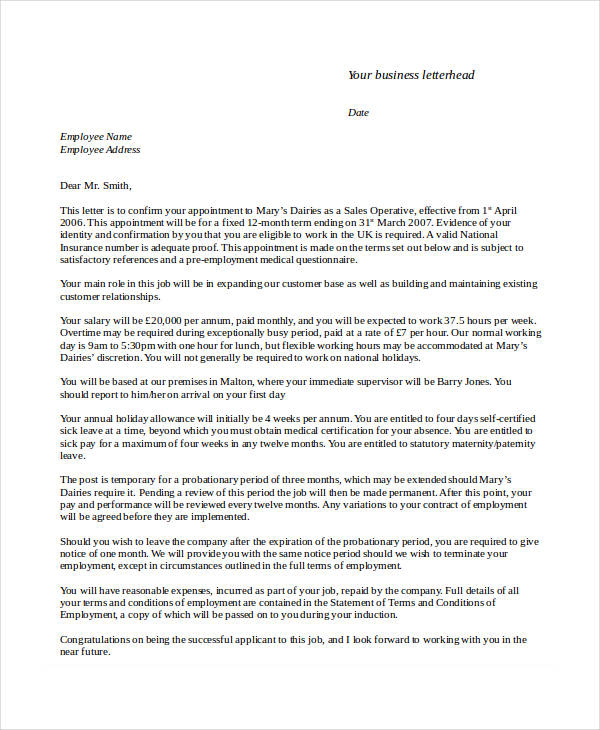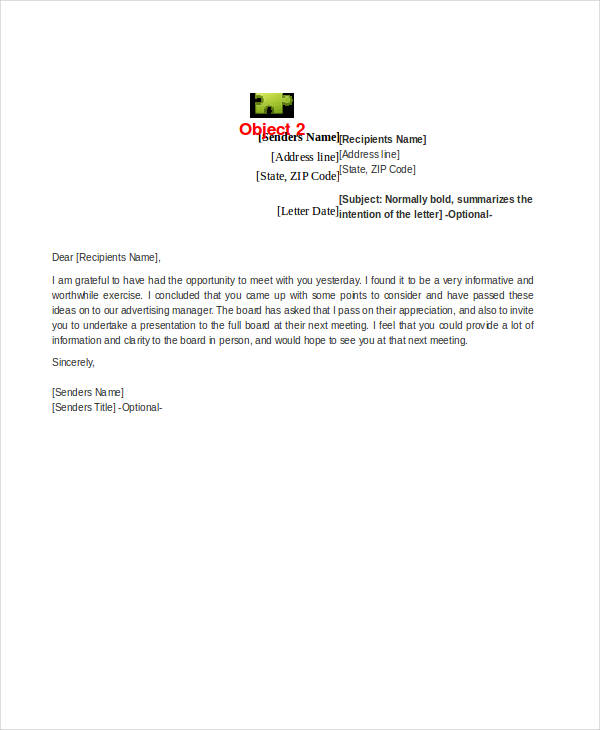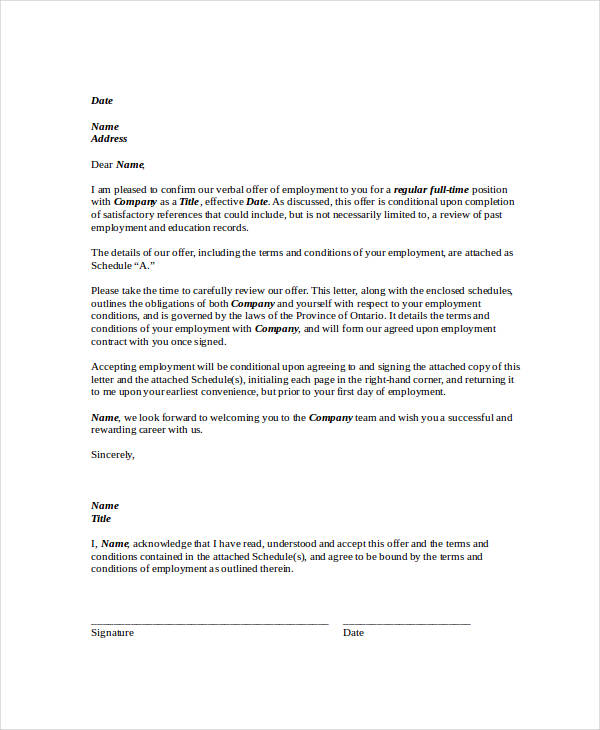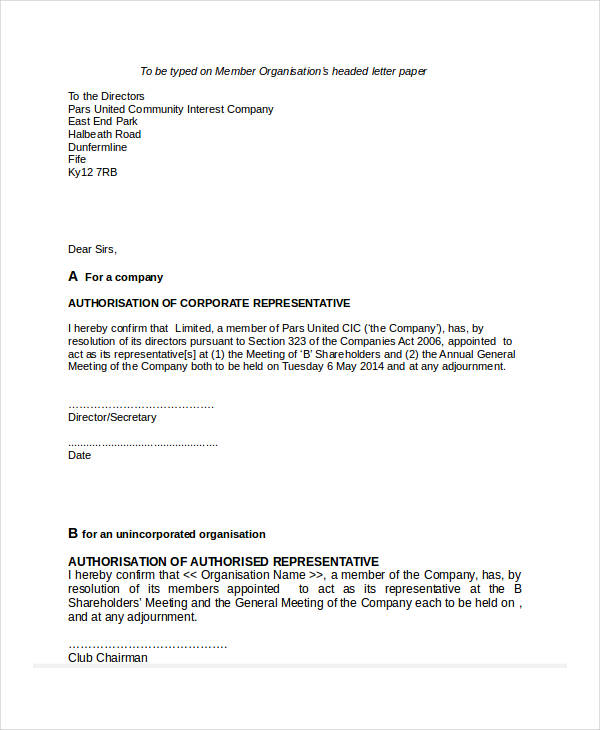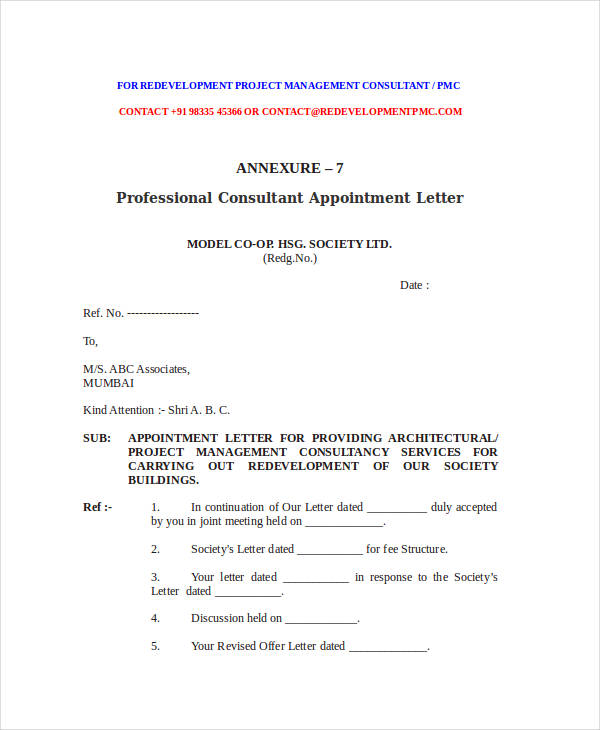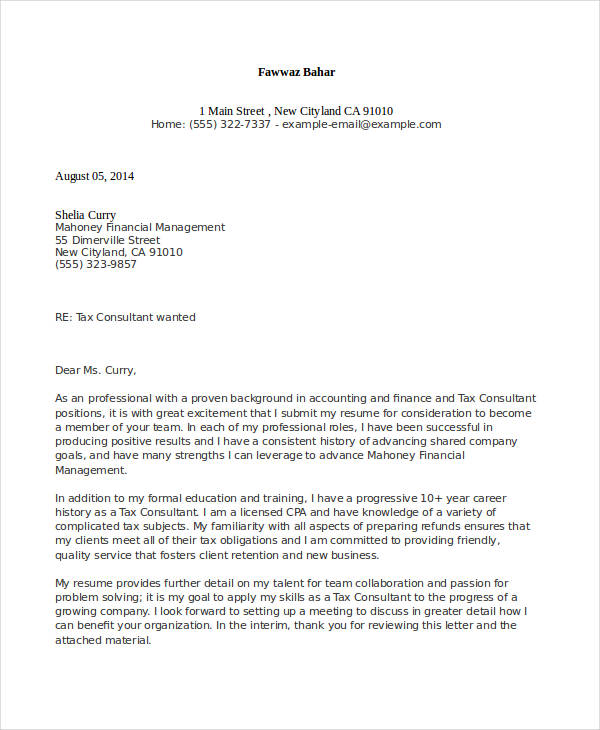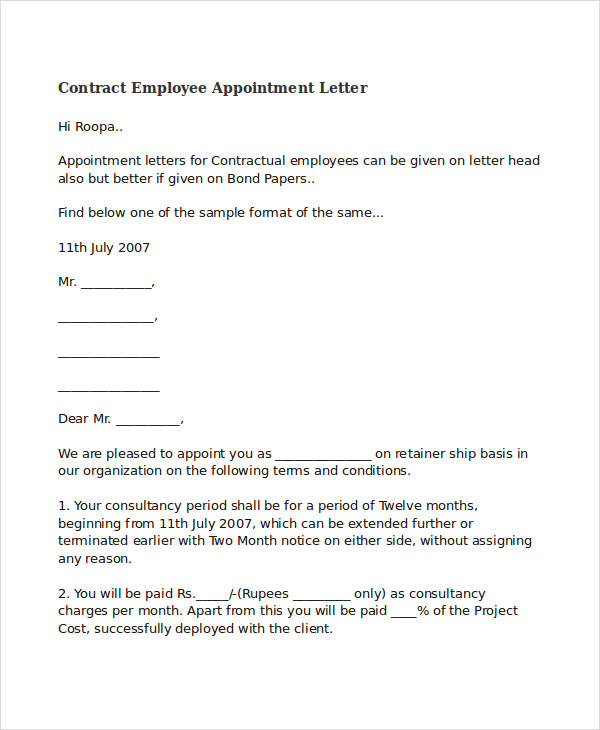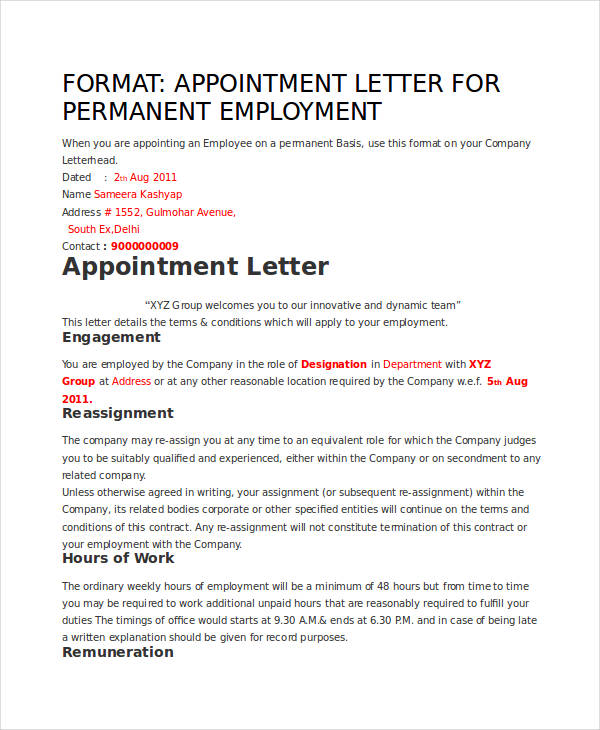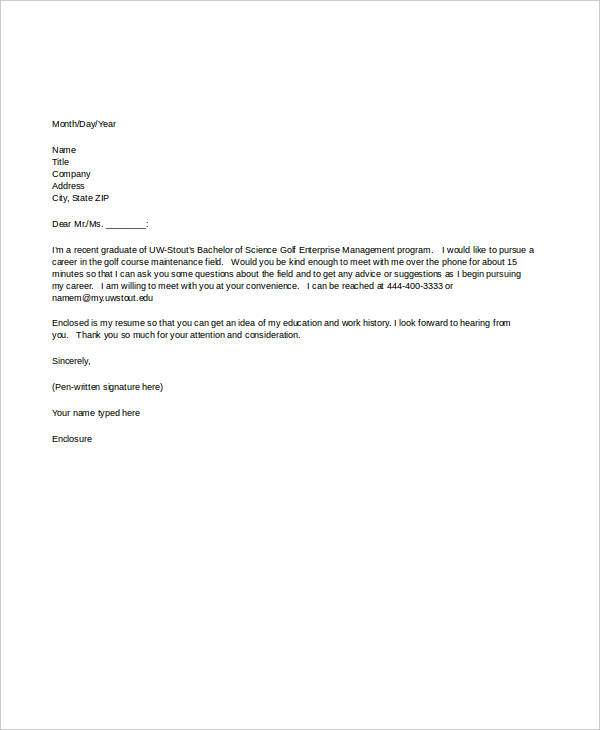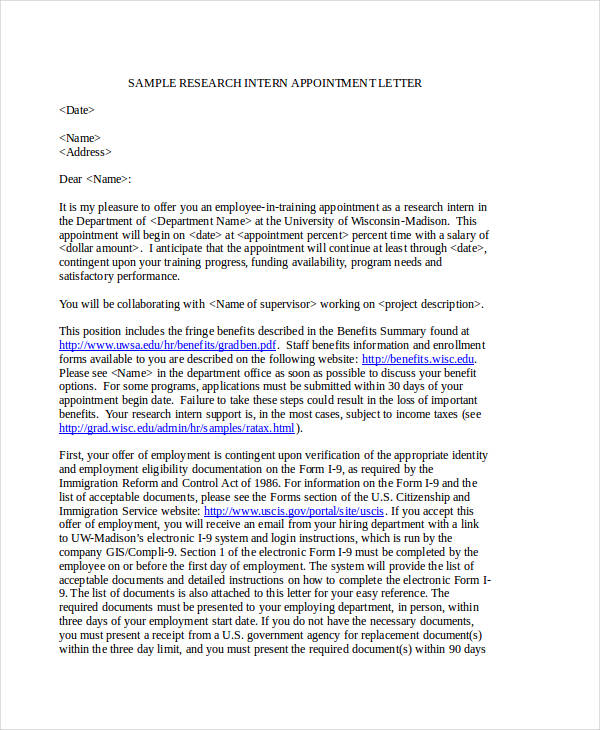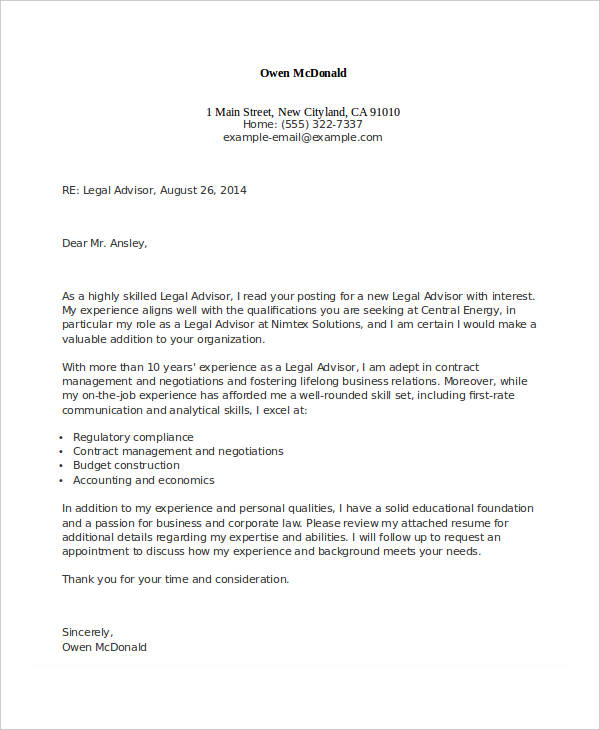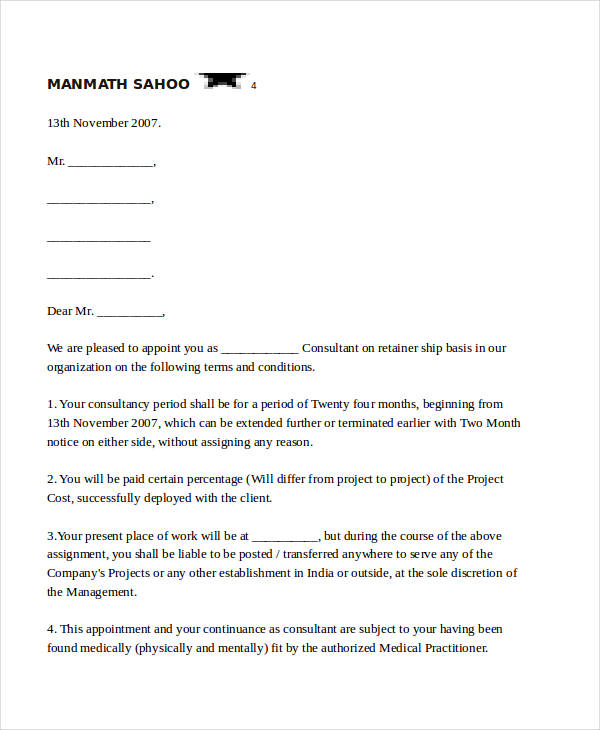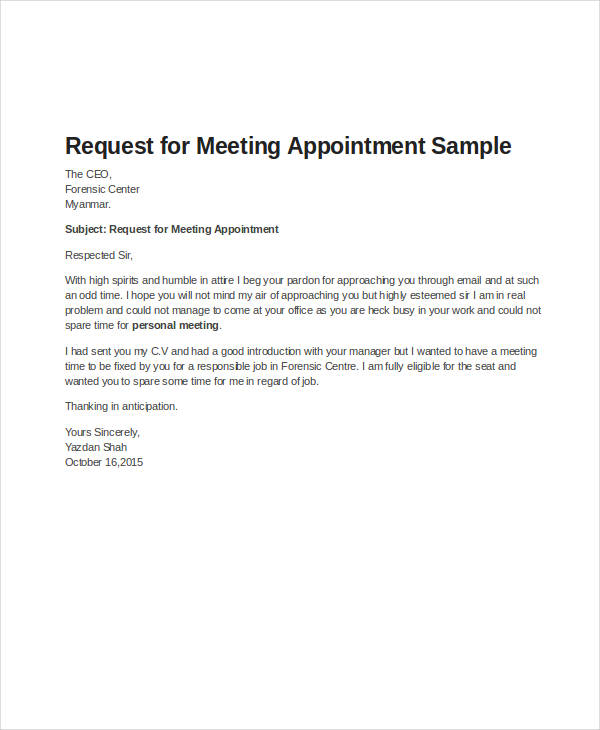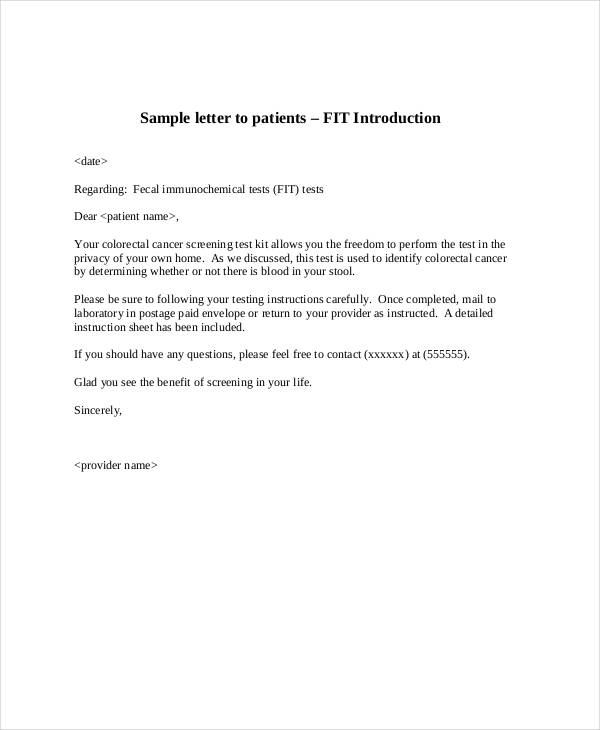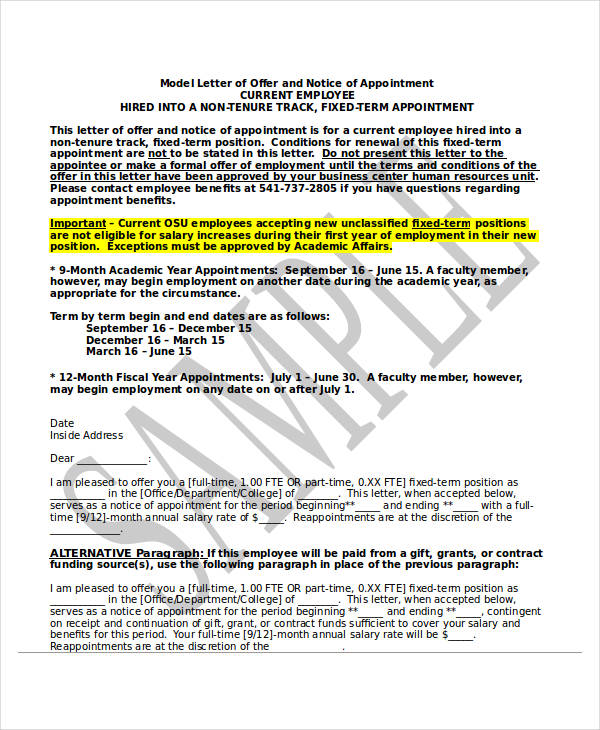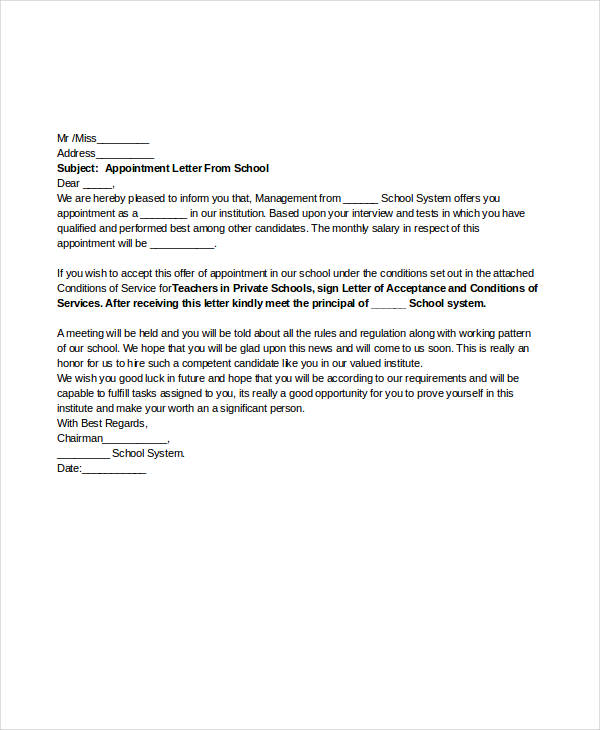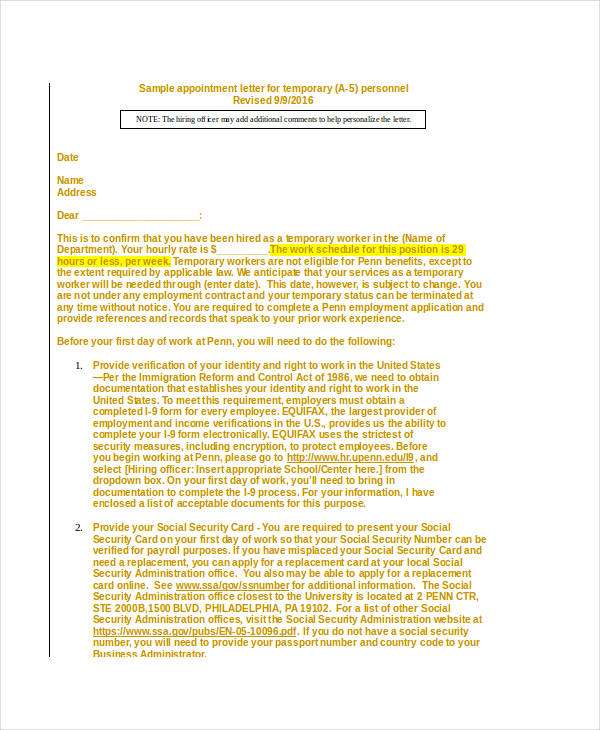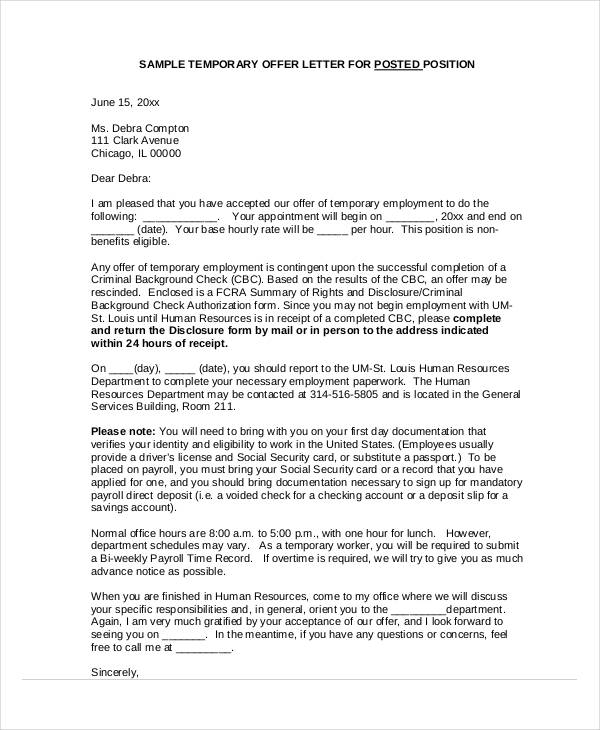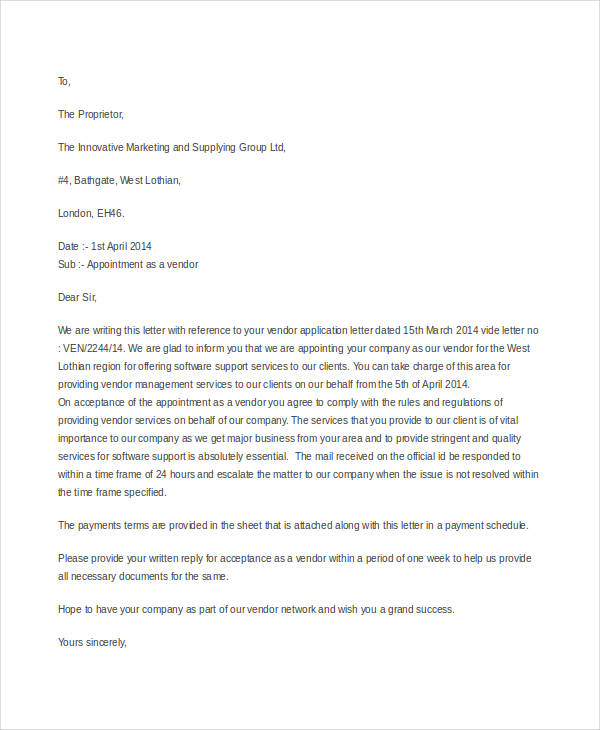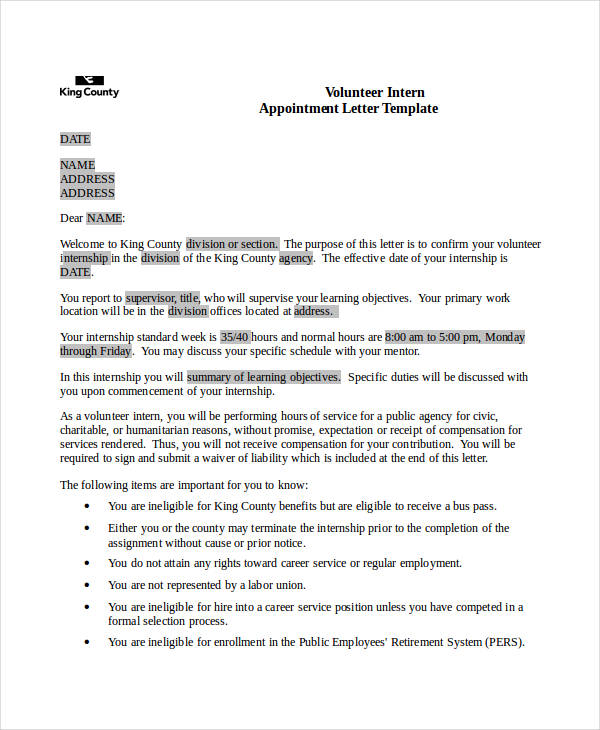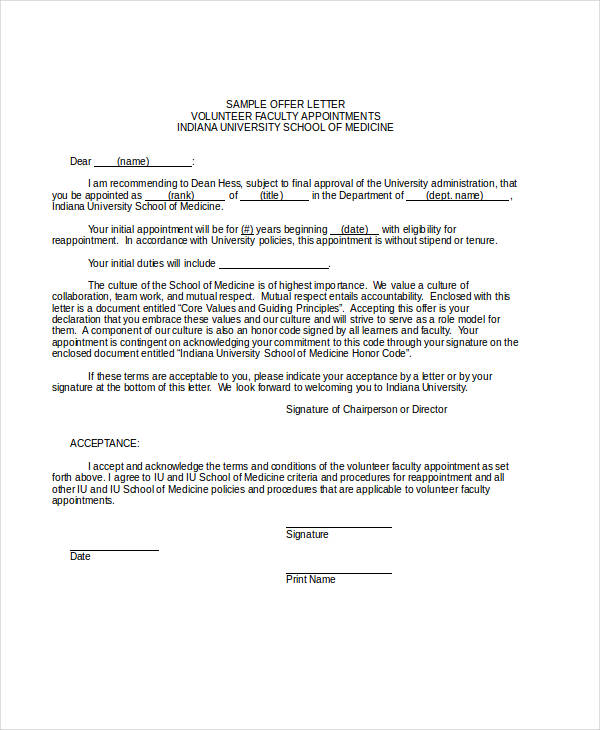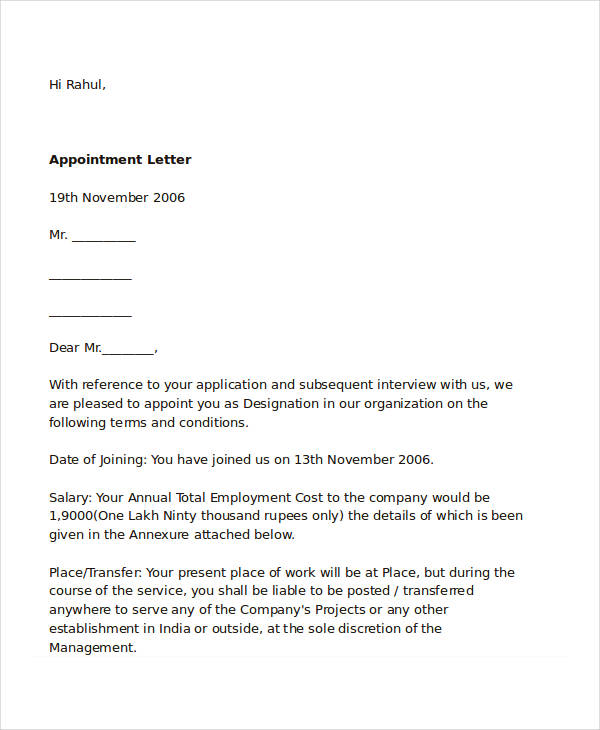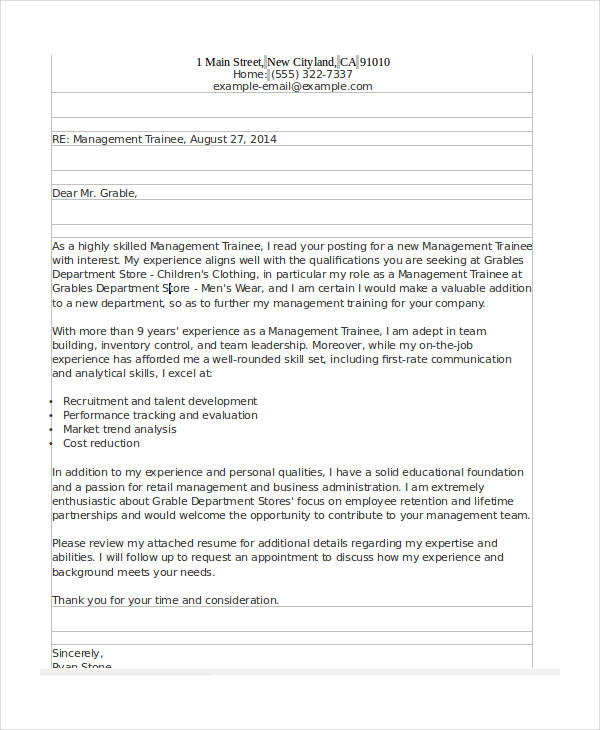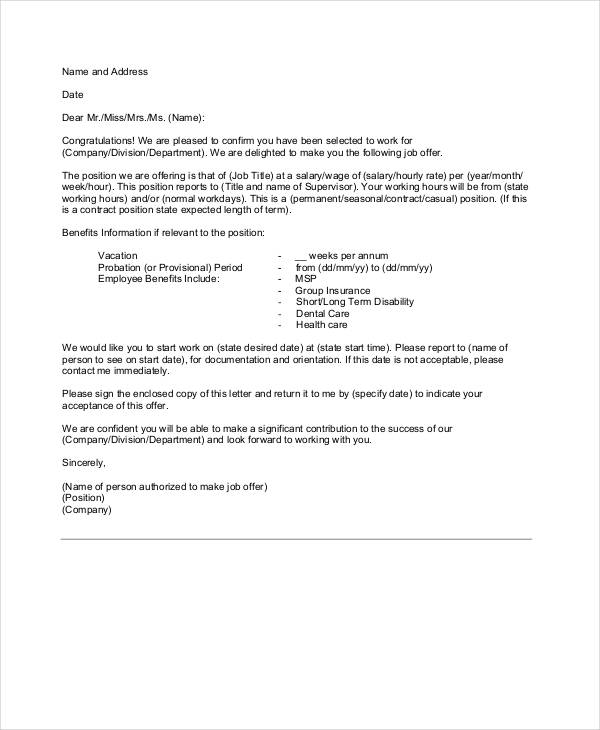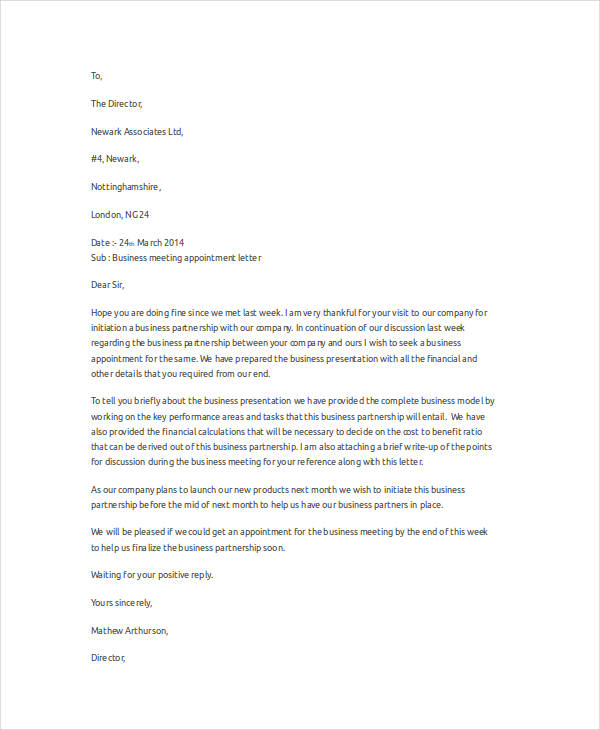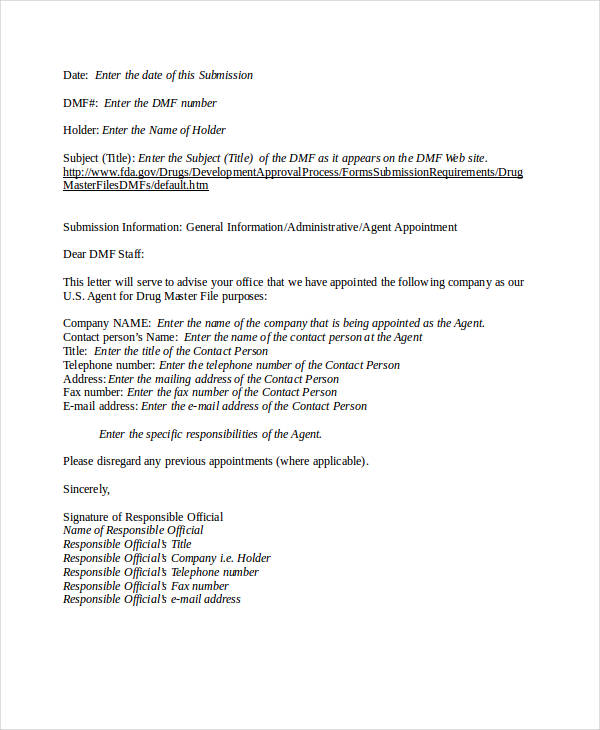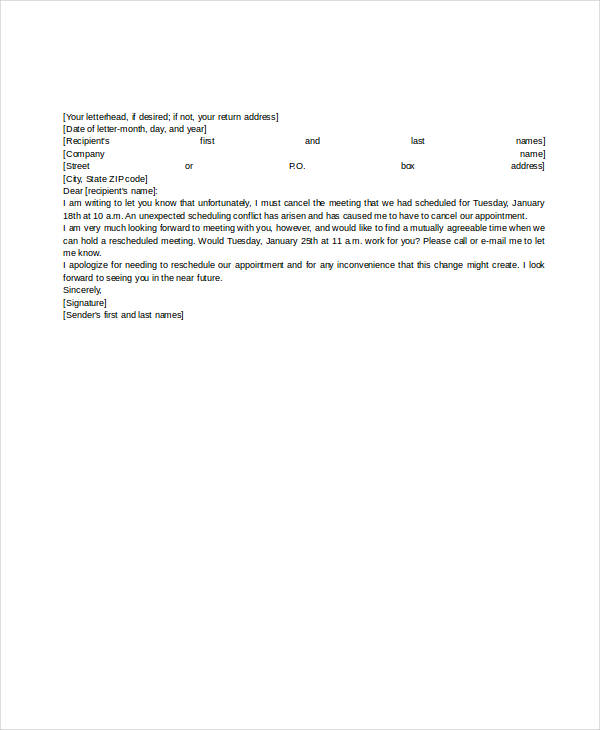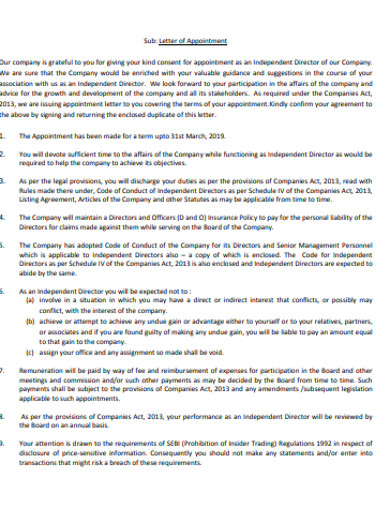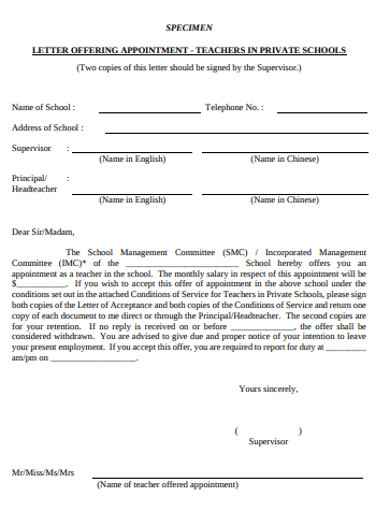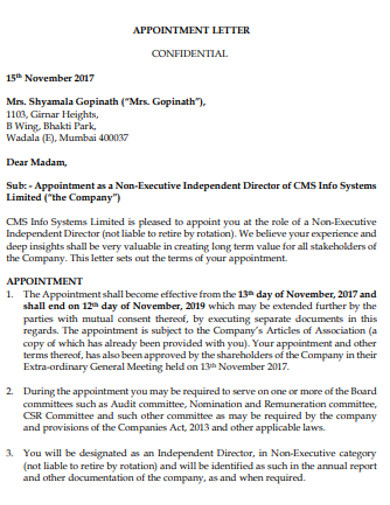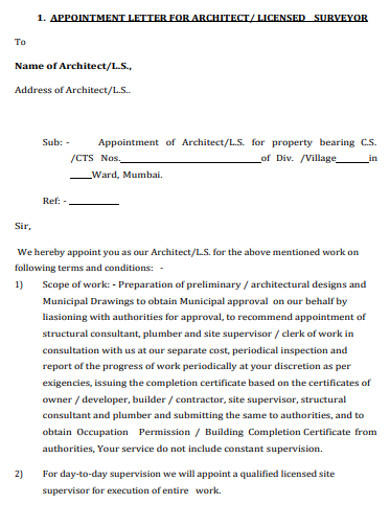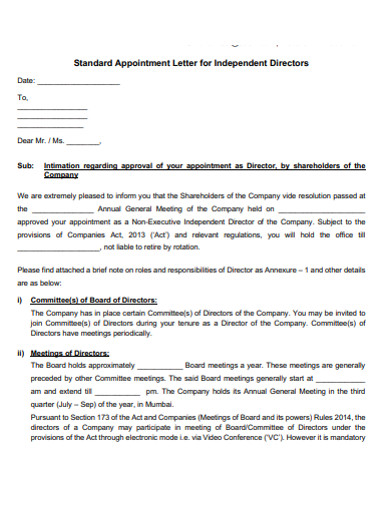79+ Appointment Letter Examples to Download
Did you ever encounter receiving an appointment letter? How does it look like? What are the contents inside? Why were you able to receive an appointment letter? Have you also tried writing an appointment letter?
Surely, there are lots of business letters in the world, if you are a newbie in writing such type of letter, I guess you need to further read this article and be able to discover some other types of letters too that is quite related with the job, just like a job application letter or a termination letter.
So what is an appointment letter then?
An appointment notice letter is a legal document stating that a company or an organization has offered a job for a specific person in a specific position with designated terms and conditions. Or simply a company or an organization has invited a specific person or group of people to join their company.
Interview Appointment Letter Example
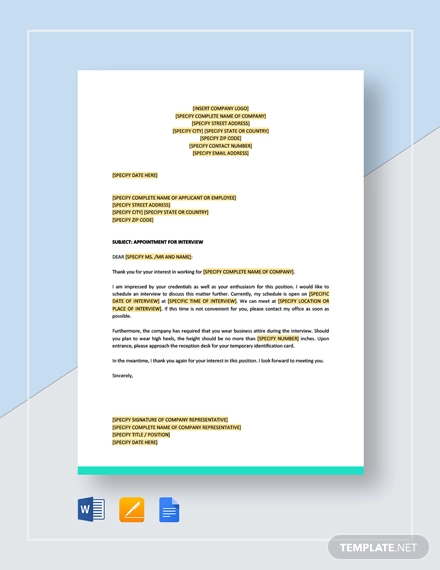
Letter to Customer Not Home for Service Appointment Example

Restaurant Confirmation of Interview Appointment Letter Example
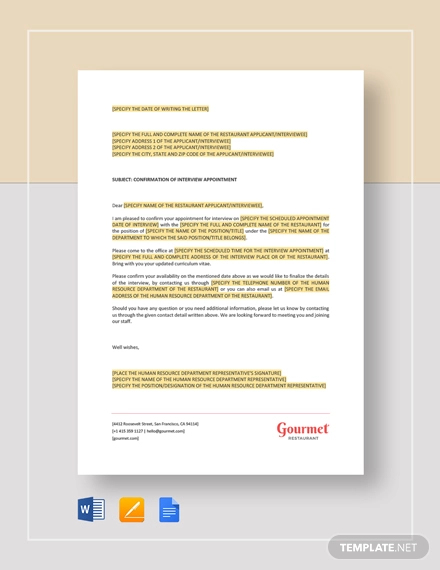
Free Appointment Letter Template
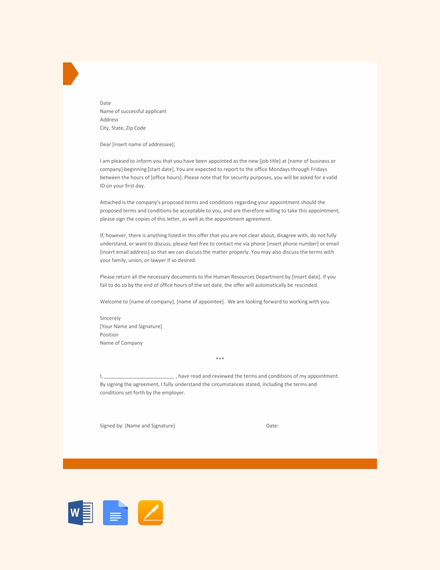
Free Appointment Letter Sample

Appointment Letter Format

Simple Appointment Letter Template
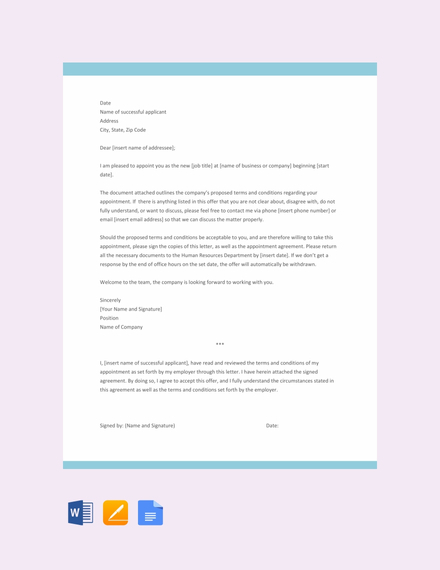
Basic Appointment Letter Template
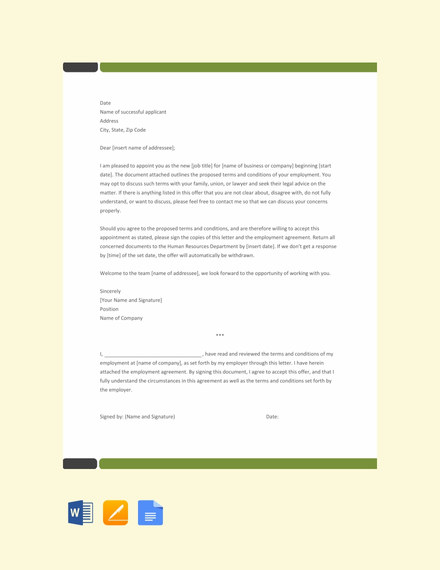
Company Appointment Letter Template
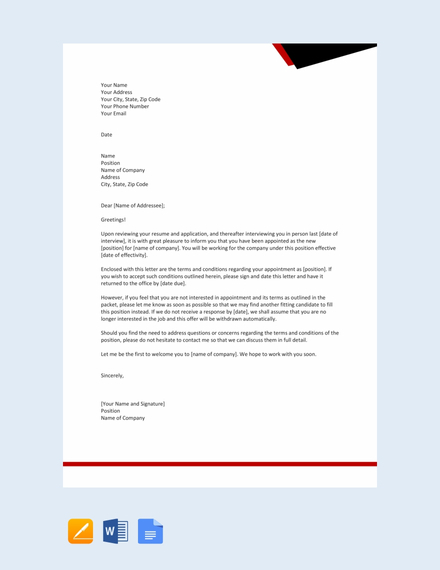
Job Appointment Letter Template for New Employee
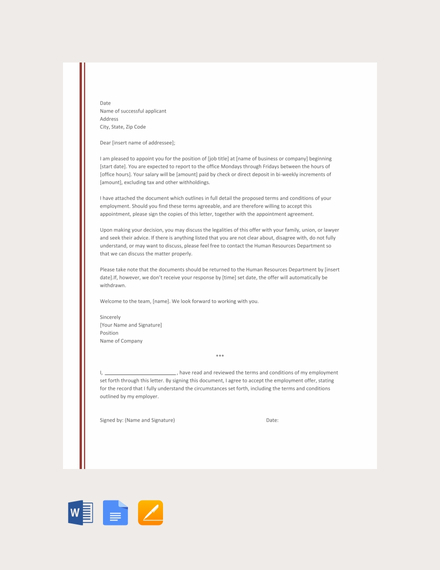
Doctor Appointment Request Letter
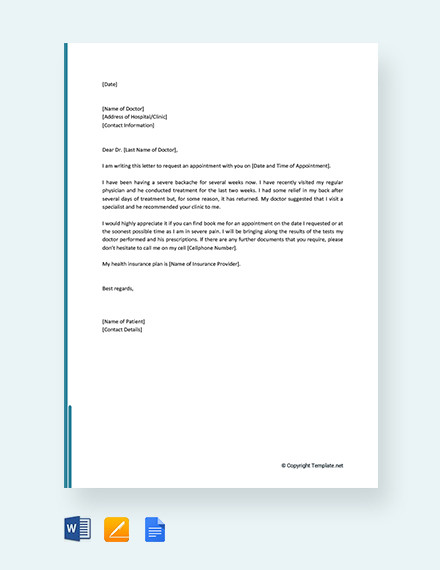
Doctor Appointment Letter to Patient Template
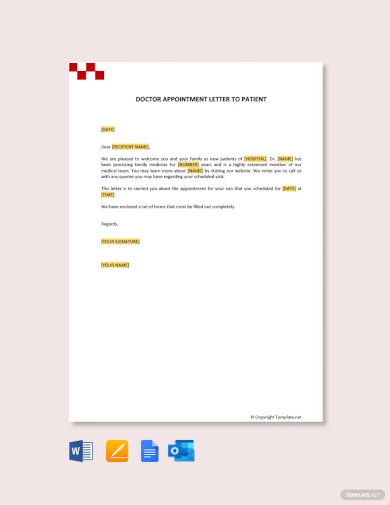
Doctor Appointment Letter Template

Sample Agent Appointment Letter Template
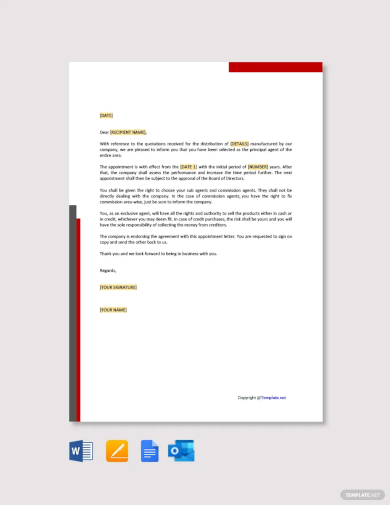
Director Appointment Letter Template
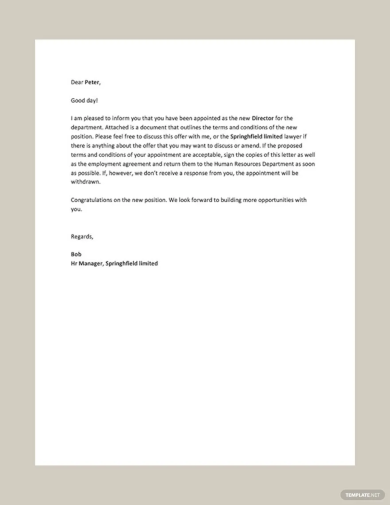
Appointment Letter for Managing Director Template
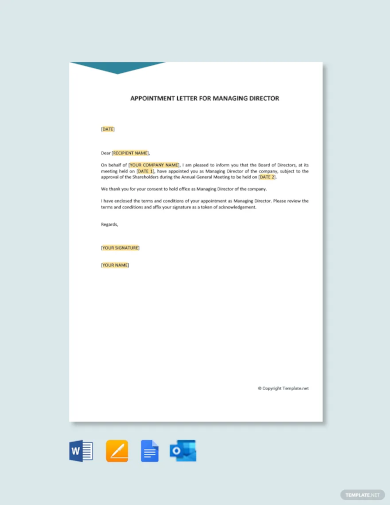
Appointment Letter for General Manager Template
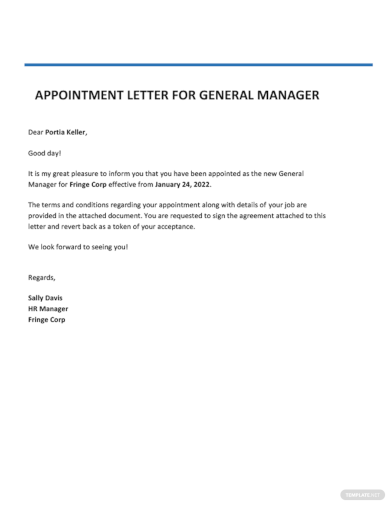
Real Estate Agent Appointment Letter Template
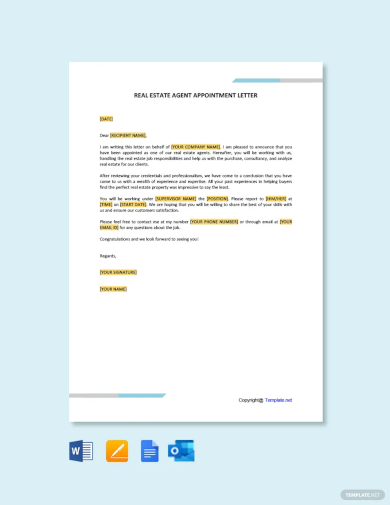
Executive Director Appointment Letter Template
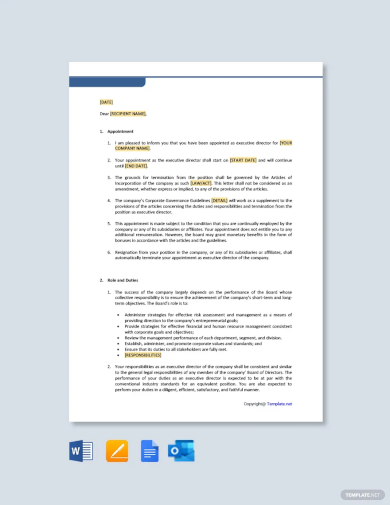
Freelancer Appointment Letter Template
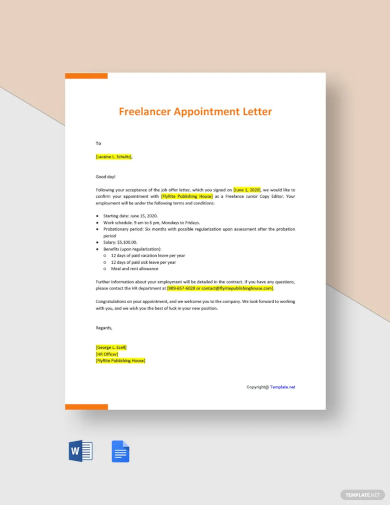
Contractor Appointment Letter Template
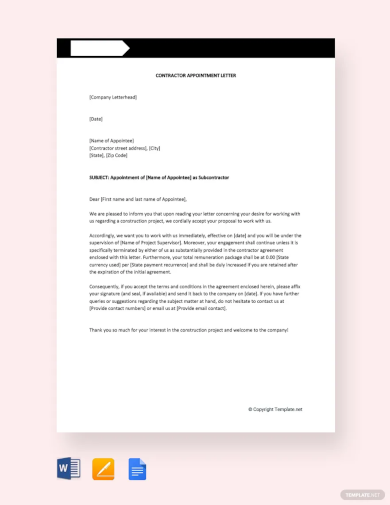
Reschedule Doctor Appointment Letter Template
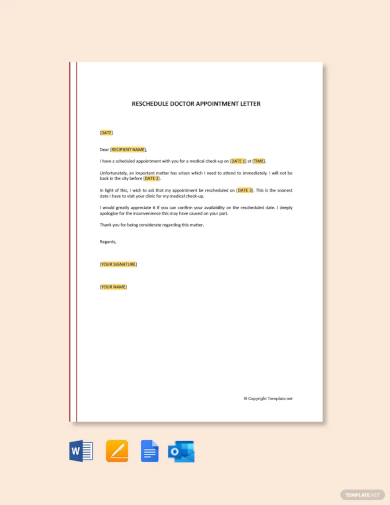
Appointment Letter Template for Teacher
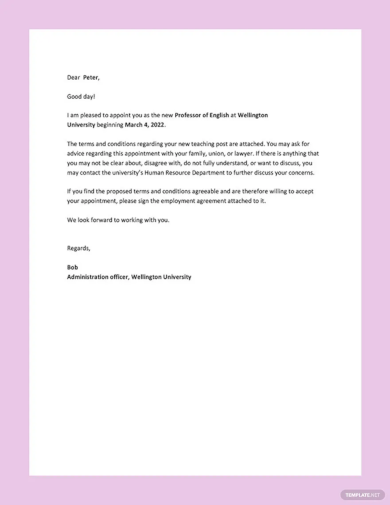
Internship Appointment Letter template

Private School Teacher Appointment Letter Template

Agent Appointment Letters
Exclusive Agent Appointment Letter
Job Appointment Letters
Sample Job Interview Appointment Letter
Job Offer Appointment Letter
Job Appointment Confirmation Letter
Missed Appointment Letters
Patient Missed Appointment Letter
Medical Missed Appointment Letter
Free Missed Appointment Letter
Dental Missed Appointment Letter
Appointment Request Letter Examples
Business Appointment Request Letter
Sales Appointment Request Letter
Formal Appointment Request Letter
Doctor Appointment Request Letter
Appointment Confirmation Letters
Job Appointment Confirmation Letter
Interview Appointment Confirmation Letter
Doctor Appointment Confirmation Letter
Business Appointment Letters
Business Appointment Confirmation Letter
Business Appointment Thank You Letter
Step by Step Process in Writing an Appointment Letter
Whether you are writing an application letter, termination letter or any type of a business letter, you should know what are the things you need to write or point out while writing it, that is to ensure clarity to the receiver of the letter.
1. In preparing the your formal letter, you should always consider it in block style, just like any other business letters out there. Block style means you should flush all the letters to the left. It appears formal that way, right? First part on the top line should be the date, followed by the employee’s name or the receiver’s name and address and that is four spaces down from the date. Then add two spaces down from that, insert your salutation. You may write “Dear Sir” or “Dear Ma’am” for formality, but you can also be personal and would sound friendly if you will just write the person’s name, example “Dear Mia”.
2. After the salutation, you must leave another two spaces, and that is where you begin your letter, or the opening of the letter. Others call this introduction. You have to call to mind that you have to be warm and friendly at the beginning part of your letter to sound welcoming. You may also see email cover letter examples.
3. After your warm welcome, you now have to describe the employee’s job responsibilities, the main tasks, the number of work hours. If applicable, you may include the length of time of any probation period.
4. Next thing to do is to mention the employee’s salary, the benefits such as medical benefits and other compensations or incentives if any. For conciseness, you may include the highlights in the company’s handbook. You need to emphasize the parts where the employee must know, the dress code for example and other policies implemented. You may also like business reference letter examples.
5. Before closing the email cover letter, it is a must to ask the employee to sign and date the letter in the space provided at the bottom of your letter. You have also to include the date when you would like the letter to be returned.
6. Next thing to consider is the closing part of the letter, you have to close it in a positive tone, still in a friendly manner. You can say “We are very much positive in receiving your response to this letter” or you may say “We very much look forward to your response”. You do not forget to include the contact information in the closing part, the employee might have some questions after receiving the letter. You may also check out how to write an official letter.
7. After the closing part, you need to leave another two spaces and put “Sincerely” followed by your name then sign it, next to it is the name of the employee and the space provide for his or her signature. Don’t forget to put the dates when signing it, remind also the employee to do the same thing. You might be interested in two weeks notice letter examples & samples.
8. Lastly, proofread your letter, be sure to edit before sending it, so you won’t have a problem.
If ever you are already working in the company and some cases you are maltreated, you might as well be interested in writing a complaint letter too.
Company Appointment Letters
Company Job Appointment Letter
Company Representative Appointment Letter
Consultant Appointment Letter Examples
Professional Consultant Appointment Letter
Sales Consultant Appointment Letter
Tax Consultant Appointment Letter
Contract Appointment Letter
Contract Basis Appointment Letter
Employee Appointment Letters
Contract Employee Appointment Letter
New Employee Appointment Letter
Permanent Employee Appointment Letter
Interview Appointment Letters
Interview Appointment Thank You Letter
Interview Appointment Request Letter
Internship Appointment Letter
Summer Internship Appointment Letter
Legal Appointment Letter Examples
Legal Advisor Appointment Letter Format
Legal Consultant Appointment Letter
Features Of A Good Appointment Letter
Can you still remember when you were bringing your application letter with you? You’re hoping that one of the companies you are applying at, will call you immediately or at least send you an appointment letter letting you know that you are qualified and you are already accepted in the company? Well, if you don’t have an idea yet of a good appointment letter, now let me tell you something good about this. You may also see business proposal letter examples.
Every business application letter requires a standard format to follow to give an impression of formality and legitimacy. I have already discussed previously the things you need to include in writing an appointment letter.
This time I am now going to emphasize the features of a good appointment letter. So these are the key points you need to dwell upon:
1. A good appointment letter should include the company’s letterhead with its name and its company logo as well, this is could be placed together with the date. The letterhead should be in the upper part of the paper. I suggest doing in justified format, so the letters are all blocked in the left part, meaning every beginning letter of the first sentence must start from the left. You may also like acknowledgment letter examples & samples.
2. When opening the first sentence of your letter, you must see to it that you are in a friendly tone, or you may be as energetic and positive you can be by starting with “Congratulations!” This would surely warm the heart of the receiver. You may also check out notice letter examples
3. Next thing you must remember is to never forget to indicate why you are writing the letter, so you now have to start discussing the important matters in your letter. You provide the necessary information the receiver deserves to know such as
- job title
- start date
- start time
- rate of pay
- benefits
- incentives (if any)
- company policies
- requirements that the receiver needs to comply(this part should be specific and informative)
4. At the closing part of the letter, you still never forget to sound friendly and positive as possible. You need to persuade the receiver to immediately respond to the letter without the impression of arrogance. Keep a positive tone. You might be interested in employee reference letter samples.
5. Another important feature you need to inculcate is putting the contact information in the closing part. It is a must to include it, the receiver might call you for further questions. You may also see thank-you letter examples.
6. Another thing, keep two copies, one for the company and the other is for the receiver. So both parties have the legal document at hand.
Remember to always highlight, emphasize and supply the necessary information the body of an appointment letter. Any business proposal letter does.
Meeting Appointment Letters
Business Meeting Appointment Letter Sample
Sales Meeting Appointment Letter
New Appointment Letters
New Patient Appointment Letter
New Job Appointment Letter
Teacher Appointment Letters
Teacher Job Appointment Letter
Primary Teacher Appointment Letter
School Teacher Appointment Letter
Temporary Appointment Letter Samples
Temporary Employment Appointment Letter
Temporary Job Appointment Letter
Vendor Appointment Letter
Free Vendor Appointment Letter
Volunteer Appointment Letters
Volunteer Intern Appointment Letter
Volunteer Faculty Appointment Letter
Trainee Appointment Letter Examples
Project Trainee Appointment Letter
Management Trainee Appointment Letter Sample
Simple Appointment Letters
Simple Job Appointment Letter
Simple Business Appointment Letter
Simple Agent Appointment Letter
Reschedule Appointment Letters
Reschedule Business Appointment Letter
Reschedule Doctor Appointment Letter
Appointment Letter Example
Teachers Appointment Letter
Sample Appointment Letter
Architect Appointment Letter
Standard Indipendent Appointment Letter
The Importance Of An Appointment Letter
Why do you think people nowadays prefer writing a letter than that of verbal manner? Why do you think most companies especially those that have big names in the business world resort to writing business reference letters? Any idea you might want to share? And why do you think an appointment letter is necessary to write? And why do you think it is also important to receive one?
Here are the answers to that never-ending questions in your mind.
These are the things that makes an appointment letter significant in the business industry or in a company (to the employer and to the employee):
1. Writing an appointment letter is very important because it bears the standard information. The qualified applicant deserves to know all the necessary information about the job he or she is going to embrace soon. The standard information includes:
- the designation
- the start date
- the start time
- the compensations
- responsibilities and duties
- policies and management agreements
2. Another importance of writing an appointment letter, if you are the employer, it shows how serious and professional you are in handling job processes. It gives an impression of respect and formality from the receiver, it shows how legitimate the working process is, that it is a no joke. You may also see simple cover letter examples.
3. On the employee’s side, it is also very necessary to receive one because he or she just deserves too, and also to make sure that he or she does know what she is in to and to know that he or she is not being scammed. So it is vice versa. You may also like what is an application letter?
4. Writing an appointment letter is important because today, in the post modern world, everything has to be legal, legitimate and credible. In the law, verbal agreements could easily be denied, therefore it is weak. If it is weak, meaning the agreement made in verbal manner is no longer making sense. You may also check out new hire welcome letter examples.
Just like you, when you applied for a job, you wrote application letter, and when you wan’t to quit you write a resignation letter, or if you are the employer, a termination letter. It has to be documented in order for it to be honored. Everything must come in papers or document these days.



